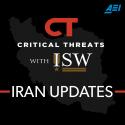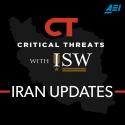Iran Update, July 14, 2023
Jul 14, 2023 - ISW Press
Iranian-backed militias raised salaries for standard militia members in Mayadin and Albu Kamal Cities, Deir ez Zor Province by 13 percent on July 13, likely enabling Iran to maintain a competitive advantage in recruitment amid increasing troop deployments to the province.
Popular Mobilization Force (PMF)-affiliated social media accounts that circulated calls to storm the US Embassy on July 14 prompted two small demonstrations of Ashab al Kahf protesters in the Jadiriyah District and al Kahdra neighborhood of Baghdad.
President Ebrahim Raisi traveled to Kenya, Uganda, and Zimbabwe between July 12-14 as part of his administration’s intensifying economic diplomacy efforts.
Senior security and foreign policy officials are articulating the regime’s comprehensive perspective on threats emanating from the Caucasus.









